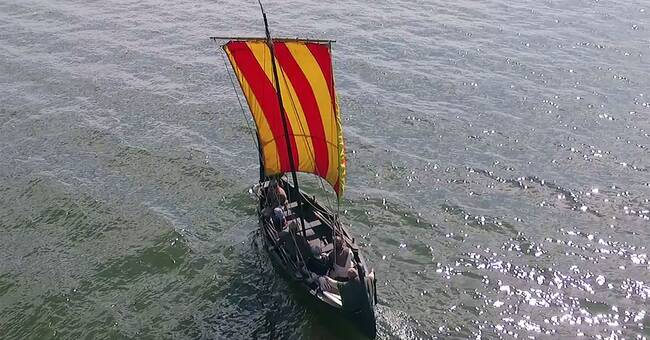To date, everything we know about the Vikings has come from written sources, often recorded several hundred years after the events took place, or through archaeological finds and chemical analyzes of remains.
Now a large research team has mapped genes from more than 400 skeletal finds, from the Bronze Age onwards.
And DNA technology provides an even more nuanced picture of history than has previously been the case.
- The most important thing we have come to is that there were small, small genetic differences between people who lived in what is today Denmark, Sweden and Norway already in the Viking Age, says Ashot Margaryan, geneticist at the University of Copenhagen, and lead author of an article that published in the scientific journal Nature today.
Traces of travel
The differences in DNA mean that researchers can now trace how people have moved in Northern Europe, 1,000 years after their death.
The results confirm much of what archaeologists have already concluded;
Norwegian Vikings traveled mainly west to Ireland and Greenland, Danes colonized the British Isles, and people from present-day Sweden usually traveled east towards the Baltics and Russia.
However, DNA research shows that there are plenty of exceptions to the rule.
You will find Danish Vikings in Österled and people of "Swedish" descent in the west.
Others, again, seem to have perceived themselves as Vikings despite the fact that they had no genetic connection to the Nordic countries at all.
Researchers have analyzed bones from typical Viking tombs in the Orkney Islands north of Scotland, and found that the people there do not show any relationship with Scandinavia.
Moving in
At the same time, the DNA study shows that many people have moved to Scandinavia during the same period.
In today's Sweden, there is an influx from Finland and the Baltics, while Denmark received people from the south, including from the British Isles.
"We see that people have come in both from the south and from the east, but we can not say whether these are people who have voluntarily settled down to trade, for example, or whether they are slaves who were brought here by force," he said. Ashot Margaryan.
The most mixed population can be found in places along the trade routes of that time.
People who lived in Fröjel and Kopparsvik on Viking-era Gotland, for example, seem to have been more closely related to Danes, Britons and Finns than to people from present-day Sweden.
Conversely, those who lived far from the trading places - including in the interior of Småland - seem to have been hardly affected at all by any genetic influx during the Viking Age.
Fatalities
The article in Nature also reveals that the Nordics' ability to tolerate milk is fully developed only during the Viking Age and not much earlier than previously thought.
Modern DNA technology also makes it possible to reveal details in individual human destinies.
It turns out, for example, that four of about 40 warriors from Mälardalen who were killed in battle and laid a boat grave on Ösel in Estonia in the 700s were brothers.

